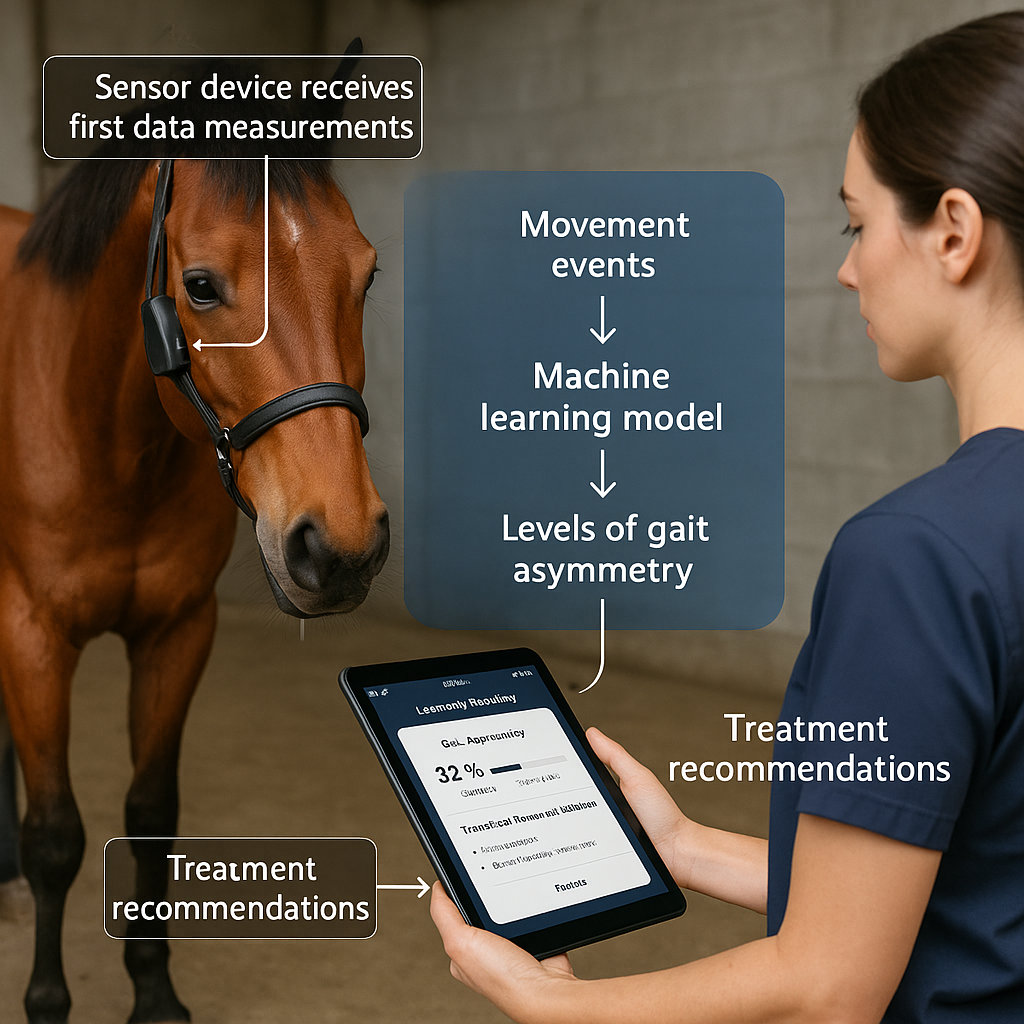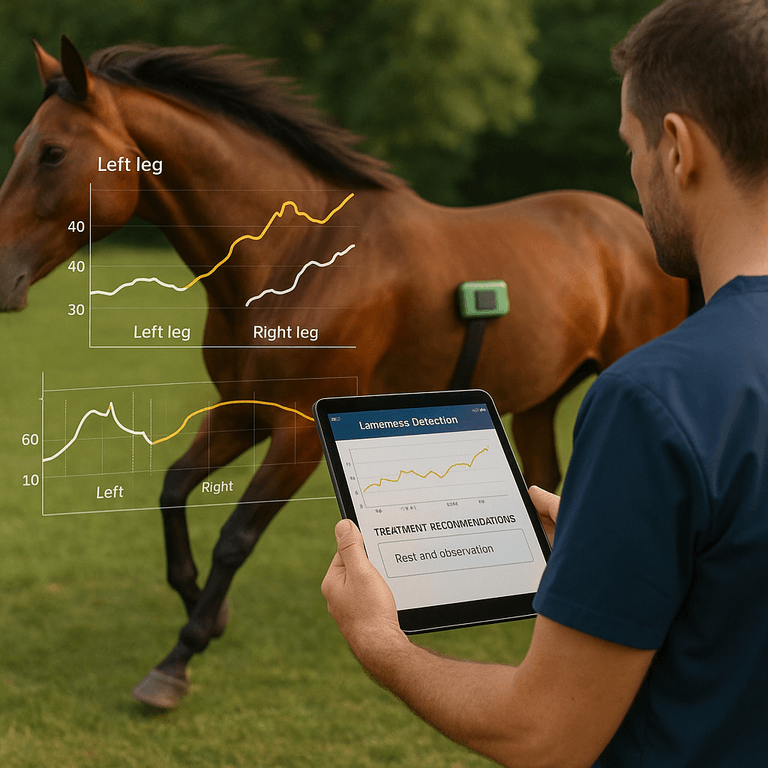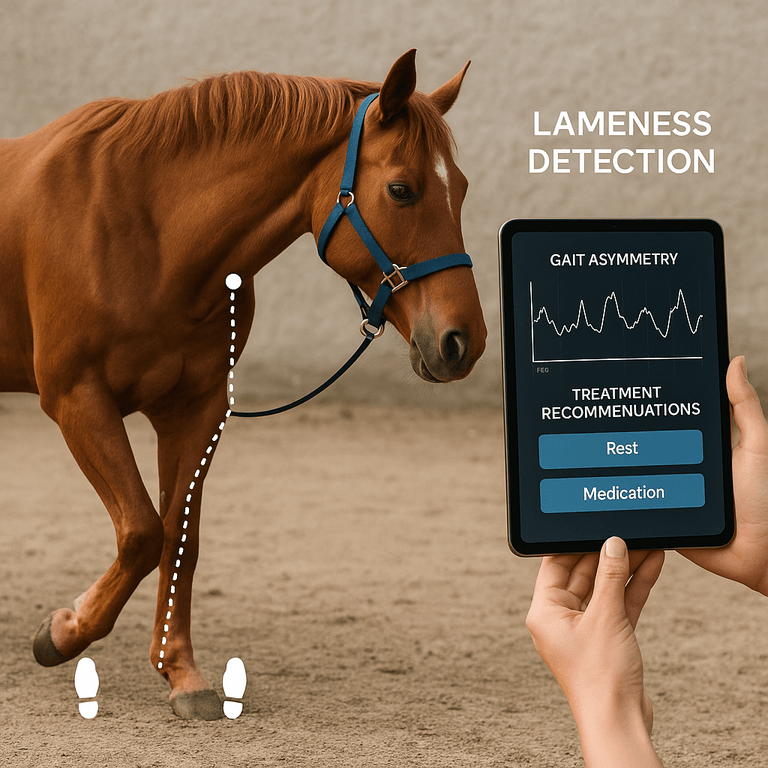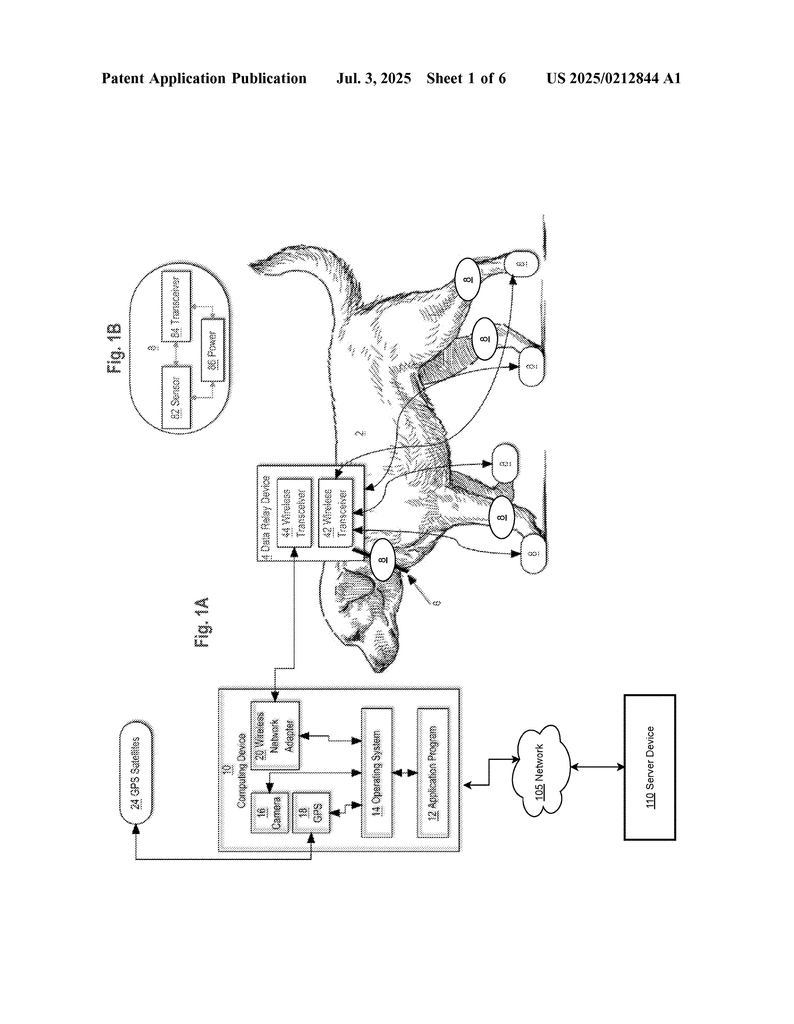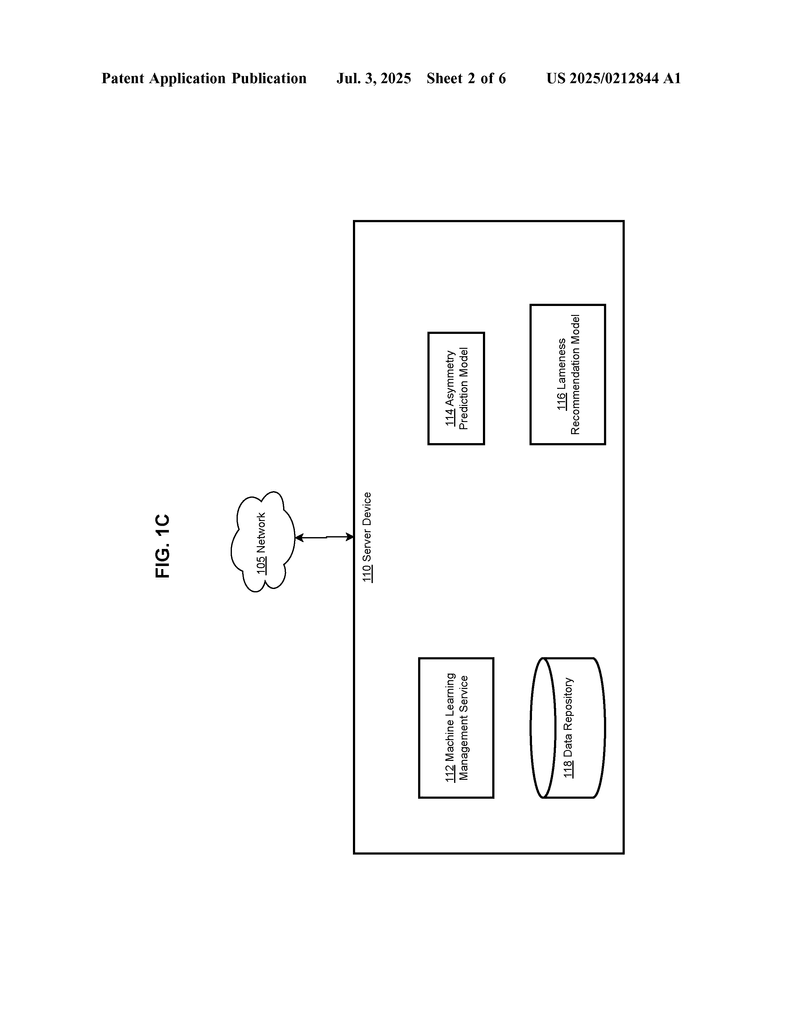Invented by Filipowicz; Dean
Technology is making animal healthcare smarter and much more accurate. If you have ever wondered how we can tell if a dog or cat is limping, or how to give them the best care, this new invention changes everything. Let’s break down what this new patent covers, why it matters, and how it works, in the simplest way possible.
Background and Market Context
Animals, especially pets like dogs and cats, can get hurt or sick just like people. One of the main signs that something is wrong with an animal is when they walk differently—maybe they limp, move slowly, or avoid using one leg. This is called “lameness.”
For a long time, figuring out if an animal is lame has been really hard. Most of the time, it depends on what the owner or veterinarian can see. If the limp is small or only happens sometimes, it might not be noticed until it gets worse. Owners might miss the signs, or think their pet is just tired or being lazy. Sometimes, the animal hides their pain, especially cats and small dogs, making it even harder.
The way we measure lameness today is not perfect. One common method is to simply watch the animal walk, run, or play and try to spot any odd movements. This is called “visual observation.” While it can help, it’s not very exact. People can easily miss small changes, and everyone sees things a little differently. This leads to mistakes, delays in treatment, and makes it hard to track if an animal is getting better or worse over time.
Another way is to use special equipment like force plates or pads. The animal walks over these plates, and the device measures how much force each leg puts down. These force plates can show when an animal is not putting enough weight on a leg. But there are big problems with this method: the equipment is very expensive, takes up a lot of space, is hard to use, and animals need special training to walk on them the right way. It’s not something most owners or even many clinics can use every day.
There are also video systems that track how the animal moves, sometimes with little markers stuck to their legs. These systems can be even more complicated and expensive. The process takes a long time, and it’s easy for the data to be wrong if the markers move or fall off.
Because all of these current ways to check for lameness are either too simple or too hard to use, many animals don’t get the help they need when they first start having problems. This leads to more pain, longer recovery, and higher vet bills.
This is where the new invention fits in. There’s a huge need for a simple, affordable, and accurate way to spot lameness in animals early, and to keep track of their progress over time. This is important not just for pet owners and vets, but also for breeders, trainers, animal shelters, and even insurance companies who want to know that animals are healthy and safe.
With millions of pets in homes around the world, and many more working animals in fields like search-and-rescue, police, or therapy, the market for better health monitoring is huge. People want to keep their animals healthy and happy for as long as possible. They need tools that are easy to use, give clear answers, and don’t cost a fortune. This invention is designed to fill that need.
Scientific Rationale and Prior Art
Let’s talk about why lameness is such a challenge to measure, and what has been tried before.
Lameness happens when an animal has pain or a problem in one of its legs. This could be due to an injury, like a torn ligament, a disease like arthritis, or even something less obvious like a sore foot. When an animal is lame, it changes the way it walks—either by limping, not putting weight on a foot, or shifting weight to other legs.
The trouble is, these changes can be very small at first. People might not notice them. Also, animals can hide their pain very well, especially if they are nervous or scared in a clinic. This means that by the time lameness is obvious, the problem could be much worse.
Over the years, scientists and doctors have tried many ways to make lameness measurement more scientific:
– Visual observation: This is simply watching an animal move and trying to spot differences. While it’s easy and costs nothing, it’s very subjective and not precise.
– Force plates and force pads: These are special mats or plates that measure how hard each foot hits the ground. They can give numbers for how much force each leg is using. But, these are expensive, take up a lot of space, and are hard to use. Animals need to be trained to walk over them correctly, or the data is not useful. Most pet owners and even many vets don’t have access to this equipment.
– Kinematic analysis: This involves putting small markers on an animal’s joints and using video cameras to track how the joints move. The data is then analyzed to see if there are any odd patterns. This method is very accurate in a research setting, but it’s too complicated and expensive for regular use. The markers can also move or fall off, making the data less reliable.
Even with these tools, there are still many problems. The equipment is too big and too expensive. The tests only work in special settings, not at home or in the park. The animal must behave in a certain way, which is hard to control. And most importantly, these systems don’t always give a full picture—they don’t track changes over time, or connect what they find to treatment steps an owner can actually use.
The scientific community has been searching for a better way—a tool that is easy to use, doesn’t stress the animal, collects data wherever the animal is, and turns that data into clear, meaningful advice.
One big reason this has been hard is because animals are all different. A Great Dane walks differently than a Chihuahua. An older cat moves differently than a kitten. Injuries can look different in each animal, and even in the same animal at different times. It takes a smart system to know what’s normal and what’s not for each animal.
The other challenge is making sense of all the data. There could be hundreds or thousands of small movements every second. Turning this raw data into something useful—like “your dog is limping on his left rear leg” or “your cat needs rest”—is not easy. That’s where modern technology, like wearable sensors and machine learning (a type of artificial intelligence), comes in.
Recent years have seen a rise in wearable technology for people—think of Fitbits, smartwatches, or health trackers. Some companies have tried to make similar devices for pets, but most of these only count steps or track location. They don’t give detailed information about how each leg is moving, or what to do if something is wrong.
This invention uses the latest advances in sensors, wireless technology, and artificial intelligence to solve these problems. It takes ideas from the best scientific tools, but makes them small, affordable, and smart enough for everyday use. It also adds a new step—connecting what it sees directly to treatment advice, so owners and vets can act fast.
Invention Description and Key Innovations
This system is like a smart health checker for animals. Here’s how it works, in very simple terms:
– Special small sensors are placed on the animal. These could be on their feet (like little boots or socks), strapped to their legs, or attached to a collar or harness. The sensors can measure things like how hard the foot hits the ground, how the leg moves, and even record sound and video if needed.
– The sensors send their data wirelessly to a small relay device (like a smart collar), which then sends the data to a phone, tablet, or computer. This can happen in real time, so you don’t have to wait for results.
– The system uses advanced software, including machine learning models, to analyze the data. It looks for patterns that show when one leg is moving differently from the others—this is called “gait asymmetry.” The models are trained on data from many different animals, ages, breeds, and health conditions, so they know what is normal and what is not.
– The software figures out when the animal starts and stops moving, what kind of movement it is (walking, running, trotting), and how each leg is working compared to the others.
– If the system finds signs of lameness, it doesn’t just show numbers. It tells you—in plain language—what is likely wrong, how serious it might be, and what steps to take next. This could be “see your vet,” “rest for a few days,” or “try these simple exercises.”
– All of this is shown on a user-friendly app or website. You can see clear graphs, simple pictures, and even get reminders. If you want, you can share the data with your vet, trainer, or insurance company.
Let’s look closer at what makes this invention special:
1. Multi-sensor, real-time data collection
The sensors are small, lightweight, and can be attached in different ways—boots, straps, or collars—so they work for almost any animal. They can measure not just how hard the foot hits the ground, but also how each leg moves, how fast the animal is going, and even listen for sounds that might signal pain. The sensors can work together, so the system sees the whole animal, not just one foot. This gives a complete and accurate picture.
2. Smart, personalized analysis using machine learning
The heart of the system is its smart software. It uses machine learning, which means it gets better as it sees more data. The models are trained on thousands of examples from different animals, so they know what’s normal for each breed, age, and body type. The system can adjust its analysis for a young puppy, an old cat, or a dog with a missing leg. It compares each animal to itself over time, so it can spot even small changes.
3. Direct, actionable treatment recommendations
Instead of just giving you a number, the system tells you what to do. If it finds lameness, it suggests what kind it might be, how serious it could be, and what steps to take. This might be “schedule a vet visit,” “rest for two days,” or “do these simple exercises.” The advice is linked directly to the animal’s data, so it’s always relevant.
4. Easy-to-understand, visual feedback
The app or website shows you simple pictures and graphs. For example, it might show a picture of your dog with color marks on the sore leg, or a graph showing which paw is not working right. You can see trends over time, so you know if things are getting better or worse. You can also compare today’s walk to last week’s, or see how your pet does at home versus at the park.
5. Works anywhere, anytime
Unlike force plates or video labs, this system works wherever your animal is comfortable—at home, in the yard, or on a walk. You don’t need to bring them to a lab or train them to walk in a special way. The sensors are small and don’t bother the animal, so you get real, natural behavior.
6. Secure, shareable data
All the data is saved safely, and you can choose to share it with your vet, trainer, or anyone else who helps care for your animal. This means everyone can work together, with the same clear information.
7. Adaptable and future-proof
The system can be updated with new machine learning models as more data is collected. This means it will keep getting smarter, and can adjust to new breeds, injuries, and treatments over time.
How does it really work, step by step?
First, you put the sensors on your animal. This could be on their paws, legs, or collar. The sensors start collecting data as your animal moves. The data is sent wirelessly to a relay device (like a collar), and then to your phone, tablet, or computer.
The software figures out when your animal is moving, what kind of movement it is, and collects all the forces, speeds, and timings of each leg. The machine learning model looks for patterns that are not normal—like if one leg is not carrying as much weight, or is moving slower, or if the animal is avoiding certain gaits.
If the system finds a problem, it uses another machine learning model to figure out what kind of treatment might help. It takes into account your animal’s age, breed, medical history, and past data. The advice is shown in simple language, so you always know what is happening and what to do.
You get all of this information on your screen, with pictures, graphs, and reminders. You can see exactly which leg is affected, how serious it might be, and what steps to take next. You can also track changes over time, so you know if your animal is getting better or if you need to see a vet.
Who can use this system?
– Pet owners who want to keep their animals healthy and catch problems early.
– Veterinarians who need accurate, repeatable data to diagnose and treat animals.
– Trainers and handlers who work with working animals and need to prevent injuries.
– Breeders who want to track the health of their animals over time.
– Insurance companies and animal shelters who need to prove that animals are healthy.
What are the big benefits?
– Early detection of problems, so animals get help sooner.
– Clear, simple advice that anyone can understand and use.
– No need for expensive or complicated equipment.
– Works in real life, wherever the animal is.
– Better outcomes for animals—less pain, faster healing, and happier pets.
Conclusion
This new invention is a game-changer for animal health. It takes the best of modern technology—wearable sensors, wireless data, and smart machine learning—and makes it simple, affordable, and useful for everyone. Whether you’re a pet owner, a vet, or just someone who cares about animals, this system gives you the tools to spot problems early, get clear advice, and keep your animals healthy and happy. With this technology, the days of guessing about animal lameness are over. Now, anyone can have the power of a scientific lab in their pocket, and every animal can get the care they deserve.
Click here https://ppubs.uspto.gov/pubwebapp/ and search 20250212844.
